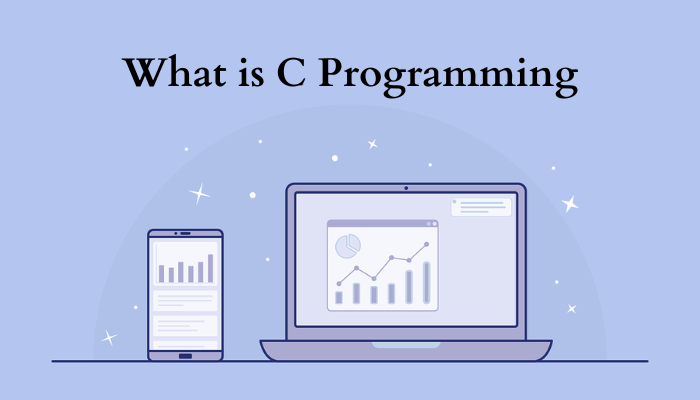What is C Programming Language ?
‘C’ is a Programming Language was Developed by AT & T’s Bell Laboratories of USA in 1927. It was designed and written by Dennis Ritchie.

‘C’ Programs are built from small and manageable segments called modules. Each module is designed and developed to perform a specific task.
A complete C program is constructed by linking together as many modules as necessary. Usually a module should accept data, operate on data and return a result.
A module should preferably handle at the most one or two tasks of those required by the complete program.
Application of C Programming Language:-
- Now a days C is Especially Used for Embedded System Programming.
- Almost 90 Percent of Unix O/S is Designed in C Programming Language.
- It Supports Low Level Programming by Providing TSR concepts (Test and Stay Resident Programs).
- It can Also be Used for Bit Level Manipulations.
Also Read :-
- What is CPU ? Full Form of CPU in English
- Introduction to Computers
- Device Management in Operating System ?
- What is Debit Cards and How does it work ?
- What is Credit Cards ? How do Credit Cards work
Why C Language is called a Middle Level Language ?
C had Almost all the features of Low Level Languages Like Bit-Level Manipulation, with Additional features of High Level Language Like Elegant Structure, Easy to Debug.
In other words, C was developed as a Language with all Advantages and no Disadvantages of Assembly Language with Additional Significant features of Modern High Level Languages. Lying between two Categories: Low Level Language and High Level Languages, ‘C’ is known as Middle Level Language also.
Characteristics of ‘C’ Programming Language ?
Characteristics of ‘C’ Programming Language :-
- A ‘C’ Program may have Any Numbers of Blank spaces and Blank Lines between words and Statements.
- Pointer Implementation is Available i.e., the Programmer has the Ability to Address Any Location in the Memory and Ability to Perform Pointer Arithmetic.
- Software Modularization.
- Its a Format free Language. No Line Numbers Are Needed.
History of C ?
The Concept of Computer Language had come around 1960, but the languages developed at that were designed specially for specific purpose such as FORTRAN for scientific Programming, COBOL for commercial business programming etc. Then, the international committee was founded to develop a language useful for different purposes. This committee had developed a general purpose language named ALGOL 60. A new Language called Combined Programming Language (CPL) was developed by Cambridge University in 1963. But, it was hard to learn. So, another language named BCPL (Basic Combined Programming Language) was developed by Martin Richards in 1967. The another language named ‘B’ was also developed by Ken Thompson at AT & T’s Bell Laboratories in 1970 for the same intention. ‘C’ Language has been developed by Dennis Ritche in 1972 at AT & T’s Bell Laboratories. At that Time, C was used to Develop an Operating System UNIX and became very Popular.
Advantages and disadvantages of ‘C’ Programming Language ?
Advantages of ‘C’ :-
- Machine Independence : Being a high level language, it is machine independent.
- Economy of Expression : C is a compact and coherent programming language. The code is quite cryptic, so that small length of code can perform complex tasks.
- Data Structures : There are variety of ways to store data in C which allows easy access to data.
- Operator Richness : C supports a wide range of operators to handle arithmetic and logical calculations.
Disadvantages of ‘C’ :-
- Difficult to Debug : C gives a lot of freedom to the developer, but it appears bit complex for a newcomer to find, what is wrong with a program.
- Loosely Syntaxed : C allows a lot of freedom in coding, We can put end of statement symbols (;), blank lines, white spaces anywhere, we want in the program. There is no fixed place to start or end a line. This can give rise to code that is difficult to understand by reading.
Social Media :-
- Facebook : – https://www.facebook.com/Geeksmit